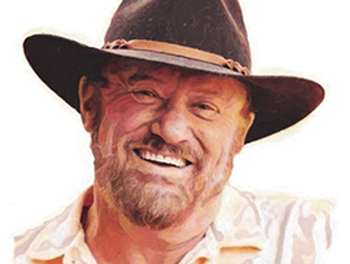What else can we possibly need to help us be more successful as Whitetail Deer hunters? Let’s just list our current equipment; hyper-accurate rifles holding dependable cartridges staged beneath pinpoint adjustable scopes up to and including 50 power, hat to shoes very classy camo that the Whitetail absolutely cannot see (even with lawfully required orange vest and cap, he cannot see you) and then, too, scent cover that blinds his capability of finding you with his 10,000 power nose. How can we get better and be more often successful? O’Neill has obvious suggestions that actually serve to remind you and not introduce a tactic you haven’t thought of before. These are the little things that “round out” the hunt and your success to the max.
Use a flashlight? If you can get to your stand, blind or intended stopping point without a flashlight, you’re going in too late. The herd buck, unless he’s breeding, vanishes during the last five minutes of darkness. Can he be in places available to see you walk by without you seeing him? Unless it’s black dark, if you can see how to walk in, then he can see you.
You need to get to the stand at least one hour before grey daylight begins. Do you stay in the woods during the day? If you’re in a tower stand, why not? Have some water, a biscuit or two and stay there. If it’s the first rut or now the likely second rut, a shooter buck may be looking for female friends all day long. If you’re back at camp taking a nap, you’ll not see him for a shot. How about leaving the stand at the hunt’s conclusion?
Back to the flashlight. If you leave early enough that you don’t need a light, you’re leaving too early. Think about all the money, time and devotion you’ve made to be there that day. Why be in such a hurry to leave. Take your time. Five minutes, 10 minutes … it could make a huge difference.
Finally, let’s just say all has worked and a reasonable shooter has made his way into your food plot or shooting lane. Bang, he’s dead. Now don’t be in such a hurry. Once he’s down from a well placed shot, he’s not getting up. So, look around and memorize the physicality of what just happened. Got a phone? Take photos both from the stand and when he’s been cleaned up and well staged. You’ll be glad you did.
Finally, and this may be a surprise, sit in the stand and be quiet for a little while. What’s the hurry? I ask because it may have been that a giant was following or traveling with your shooter and you didn’t see him. Does the big guy know what just happened? Of course not. He possibly can see his buddy lying on the ground just ahead but I can assure you he did not know what happened. If you stay in the stand and shut up, he may walk about for a look and you will have a chance, if it appeals to you, for a double.
I was taping a hunting show in Arkansas once on a farm with a limit of one deer. One walked out, a TV deer, if you know what I mean, did and promptly died. OK, we started getting up our gear, taped a few quiet comments and exchanged congratulations and then looked at my prize from the stand. Surprise! A true giant, likely 150-plus class was standing over my dead deer and even “flipped” him up in the air with his antlers before walking away seemingly puzzled that he would not fight back.
My point? Relax, make it last. Could be that this is your day and “your shooter” was not alone.





